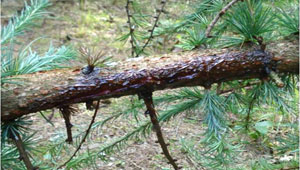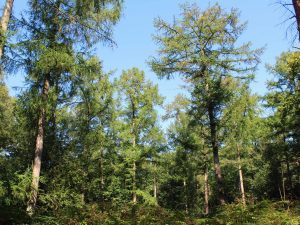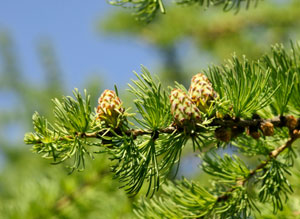Larch

Larch is a fairly rapidly growing tree, whose long-lasting timber is very good for fencing, furniture making and boat-building amongst other uses. It is a large coniferous tree that can grow up to 50m in height, and is unusual amongst conifers in that it is deciduous (i.e. sheds its leaves). It was introduced to Britain in the early 17th century. Larch comes in two 'flavours" - European and Japanese.
Leaves
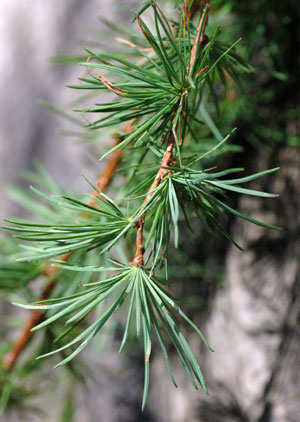
The flattened, soft, needle-like leaves are arranged radially around the tips of young shoots, or in clumps/rosettes/bundles (of 30 to 40 leaves) on older wood. In Spring, the new leaves are a bright, fresh green colour but in autumn they turn a yellow, golden colour. then the leaves have a blue-green colour.
Flowers and fruits
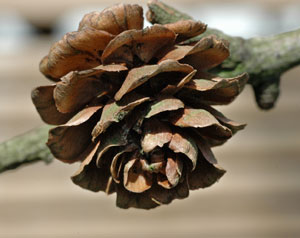
he male flowers, in the form of small 'cones', are yellowish / creamy in colour and are lost after pollen release. The female flowers are erect, small strobili / cones, somewhat variable in colour green, red or purple, but becoming brown as they mature and lignify (become woody). The female flowers are positioned amongst young green needles. The seeds when formed are winged. The cone scales of the European Larch are pressed towards the body of the cone, whereas those of the Japanese Larch arch backwards rather like the petals of a rose.
Larch gallery
Sadly, larch is one of many trees that is affected by Phytophthora ramorum; this is a water mould that is known to infect more than 150 plant species. Infection of Larch with this organism can result in
- shedding of the needles , so that the crown of the tree thins
- the tree forms an excessive numbers of cones
- the main trunk of the tree develops bleeding cankers (often near the top of the tree)
Details of this disease and its distribution can be found here
